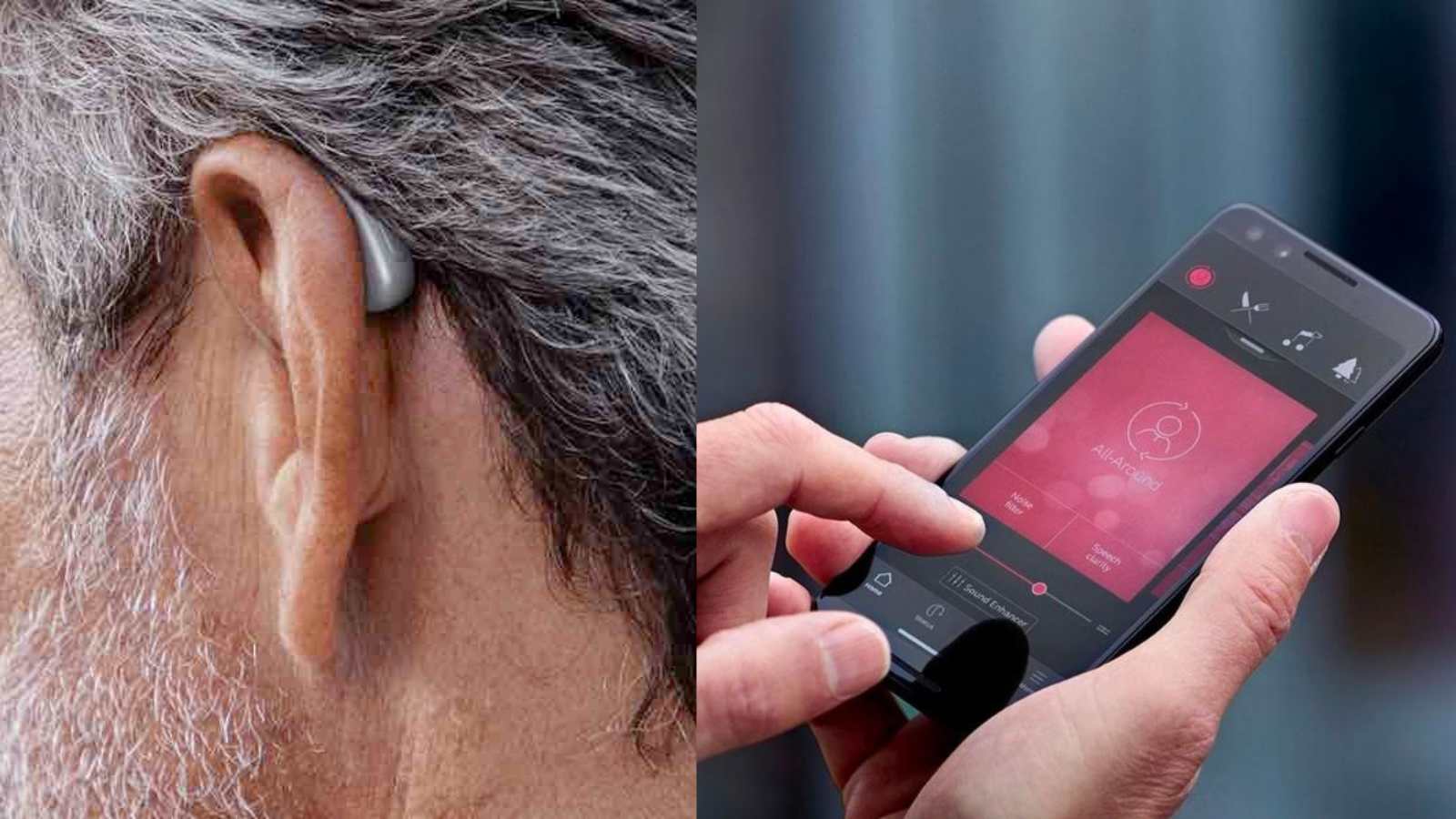Hearing aids have come a long way since their inception over 100 years ago. What started as a simple amplified ear horn has morphed into a complex, miniature computer programmed to adjust to your specific hearing needs.
Quality hearing aids are robust, miniaturized computers, and they are far more sophisticated than their tiny size suggests.
This blog post will give you a crash course on how hearing aids work.

Prefer to watch?
Click below for our quick video crash course.
Hearing Aid Microphones

A microphone collects sound energy and changes it from an acoustic signal into an electric voltage and current.
Hearing aids typically have two tiny microphones that pick up sound from the environment and convert it into these electrical signals.
Microphones can also change the way that they pick up sound. For example, narrowing in on sounds directly in front of you or picking up sounds in the broader bubble around you.
In addition, microphones can pick up sound in specific shapes, called polar plots.

Amazingly, hearing aids constantly adjust based on your listening environment. Without you even thinking about it, the hearing aid notices when to change the microphone strategy to help you hear your best at all times.
If a speaker is directly in front of you, the hearing aid will zero in on that voice and reduce noise from other directions.

Hearing Aid Computer Chips or Processor

After the microphone picks up sound in your environment, the electrical current travels to a tiny computer chip inside your device. The onboard computer analyzes the sounds and makes choices about what is important.
Premium devices can distinguish between background noise and speech and add more volume to the speech sounds while reducing the background noise. Think of the computer chip as the brain of the hearing aid.
Depending on how sophisticated the computer chip is, the hearing aid provides additional support in demanding listening situations, such as in echo, wind, car, or a noisy restaurant.
Nowadays, hearing aids also communicate with one another wirelessly to maximize their capabilities.
Amplifier

The computer then instructs the amplifier to adjust the electrical signals from the microphone to match your specific hearing needs.
The amplifier's job is to take those electrical signals and increase the volume to the level you need for good audibility.
A good amplifier also suppresses loud sounds to create a comfortable listening experience.
Speaker (Often Called a "Receiver")

Every hearing aid has a tiny speaker that broadcasts sound to the wearers ear. The speaker must be small enough to fit inside the hearing aid while still being powerful enough to amplify sound adequately.
The speaker strength will be selected based on the individual's hearing loss, with a stronger speaker requiring a larger size. The setup will also be slightly different depending on whether the hearing aid is a BTE, a RIC, or a custom hearing aid. A custom hearing aid will route the sound directly into the ear, while a BTE or RIC will have a different setup.
Wire or Tube

In a BTE or RIC hearing aid, the wire or tube connects the microphone(s) to the receiver or speaker. The difference between the two is the speaker's location and how far it sends the sound.
A BTE hearing aid speaker is located on the body of the device, and sound is sent through the tubing into the ear.
A RIC hearing aid has the speaker located directly in the ear canal. You can read more about the difference between a RIC and a BTE here.
Battery

All hearing aids require batteries to function. Again, if we think of a hearing aid as a tiny computer, it needs energy from a power source to work. Batteries come in different options, depending on the size and style of the hearing aid.
A rechargeable battery will be placed in the charger each night and provides a reliable power source during the day (typically between 15 and 30 hours of daily use).
A hearing aid with disposable batteries will require replacement at specific intervals, depending on the size of the battery (typically every 3-7 days).
While batteries and hearing aid processing have improved over the years, a greater degree of hearing loss and more audio streaming are two reasons batteries may drain faster.
Buttons and Controls

Hearing aids also have buttons that allow users to adjust volume, change settings, and turn the hearing aid on and off.
Depending on the hearing aid, there are different styles of buttons or switches. Some will have multiple buttons with various features, for example, a toggle switch for volume and program buttons to change programs. Custom hearing aids may also have a volume wheel.
Most hearing aids today also come with Smartphone apps that provide another option for volume control and customization.

Some people prefer to use the app for these adjustments, while others like to keep it simple and use a button, toggle switch, or volume wheel on their hearing aid.
All Of This Amazing Technology Works Behind The Scenes
Hearing aid technology is remarkable when you stop to think about what goes on behind the scenes.
And while it's interesting to know more about how these devices work, luckily, you don't have to do anything to enjoy the benefits of amplification from your hearing aid.
Thanks to today's technology, you can enjoy better hearing in many different situations with the right device and programming.
Hearing aids are complex devices that have come a long way in recent years. By understanding how they work, you can better appreciate all the work that goes into making them so small yet so powerful.
And now you know what's going on inside that little device!

.jpg)

